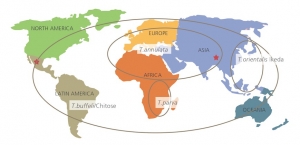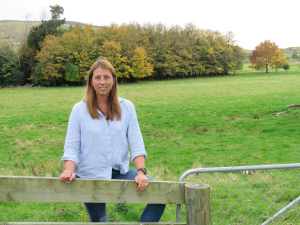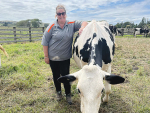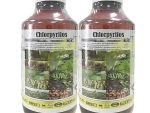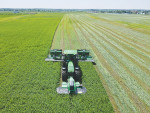Different species of Theileria cause disease around the world (see map). In the Pacific Rim countries, the specific parasite is Theileria orientalis. A mild strain of this species, called Chitose, was first identified in New Zealand in 1982.
However, laboratory testing by MPI confirmed the presence of a new strain of T. orientalis in New Zealand in spring 2012.
This strain is called Ikeda and has been associated with anaemia and deaths of cattle in New Zealand. It has previously been, and still is, associated with illness and deaths of cattle in Australia, Indonesia, Japan, Korea and other Pacific Rim countries.
The clinical signs of anaemia include lethargy, exercise intolerance and increased respiratory and heart rates. Stresses, such as mustering and yarding of severely affected animals, can lead to collapse and death. While subclinical disease is likely to have an impact on milk production, reproductive performance and susceptibility to other conditions, a case study in Victoria has suggested no measurable impact on milk. It is possible an immunity develops and this will limit recurrence.
There are no human health or food safety risks associated with Theileriosis.
The parasitic infection can be treated with a phenolic drug, buparvaquone. This was developed about 40 years ago for treatment of a related, but much more severe, form of Theileriosis in Africa. The drug is only licenced and available in certain countries.
It has been made available in New Zealand in limited and controlled quantities under special permit and has long withholding periods for milk (35 days) and meat (140 days). Cattle with signs of disease need good care. Supportive therapies, such as blood transfusions, have been helpful for severely affected animals.
This is not necessarily an easy procedure and, as with all such treatments, requires veterinary expertise. Prevention and control of Theileriosis is partly achieved by controlling ticks and managing animal movements to ensure infected cattle are not mixed with uninfected cattle and vice versa.
The disease is now considered to be widespread over the northern half of the North Island. It has also been diagnosed as far south as Taranaki, King Country, Whanganui and Hawke’s Bay. Wherever cattle ticks are active, there is a risk of Theileriosis. As of December 2013, 372 cases had been confirmed.
Veterinarians suggest many more cases have occurred than have been treated, managed with veterinary advice, sampled for analysis or reported.
The potential impact of this disease on the New Zealand dairy industry is not known. DairyNZ is working with farmers, veterinarians and MPI to monitor the disease, better manage it and support and advise farmers.

